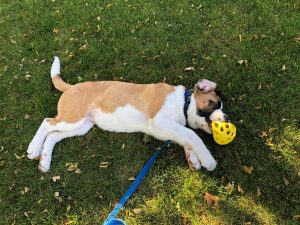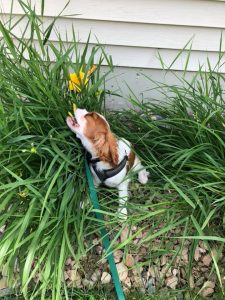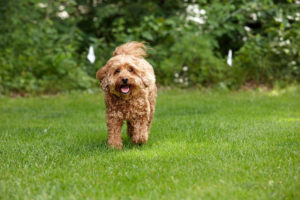DogWatch Dog Story: Maggy
Maggy is a sweet, spunky English Springer Spaniel who has graduated from DogWatch hidden fence training. She’s so adorable and has such a fun personality, Jake and Afton with DogWatch are considering getting an English Springer puppy of their own. She lives in Mendota Heights where she loves running along as her parents and human siblings ride their bikes.
Before Maggy came into the picture, her family had a beloved Springer Spaniel named Angel. She was an affectionate and endearing girl who was so precious, her dad couldn’t imagine losing her. That’s when they called DogWatch to install a hidden fence. Angel was a little nervous at first and needed some coaxing to get her around the yard. But she learned her new boundaries and lived a long, happy life enjoying her freedom.
Maggy could never replace Angel, but she came into the house and revitalized the energy (and sometimes chaos). Unlike Angel, Maggy learned her boundaries very fast and never hesitated to use every inch of her yard. All dogs are a little different when it comes to acclimating to a dog fence and the new boundaries, even when being trained the same way. But in the end, they can all learn and enjoy the benefits.


